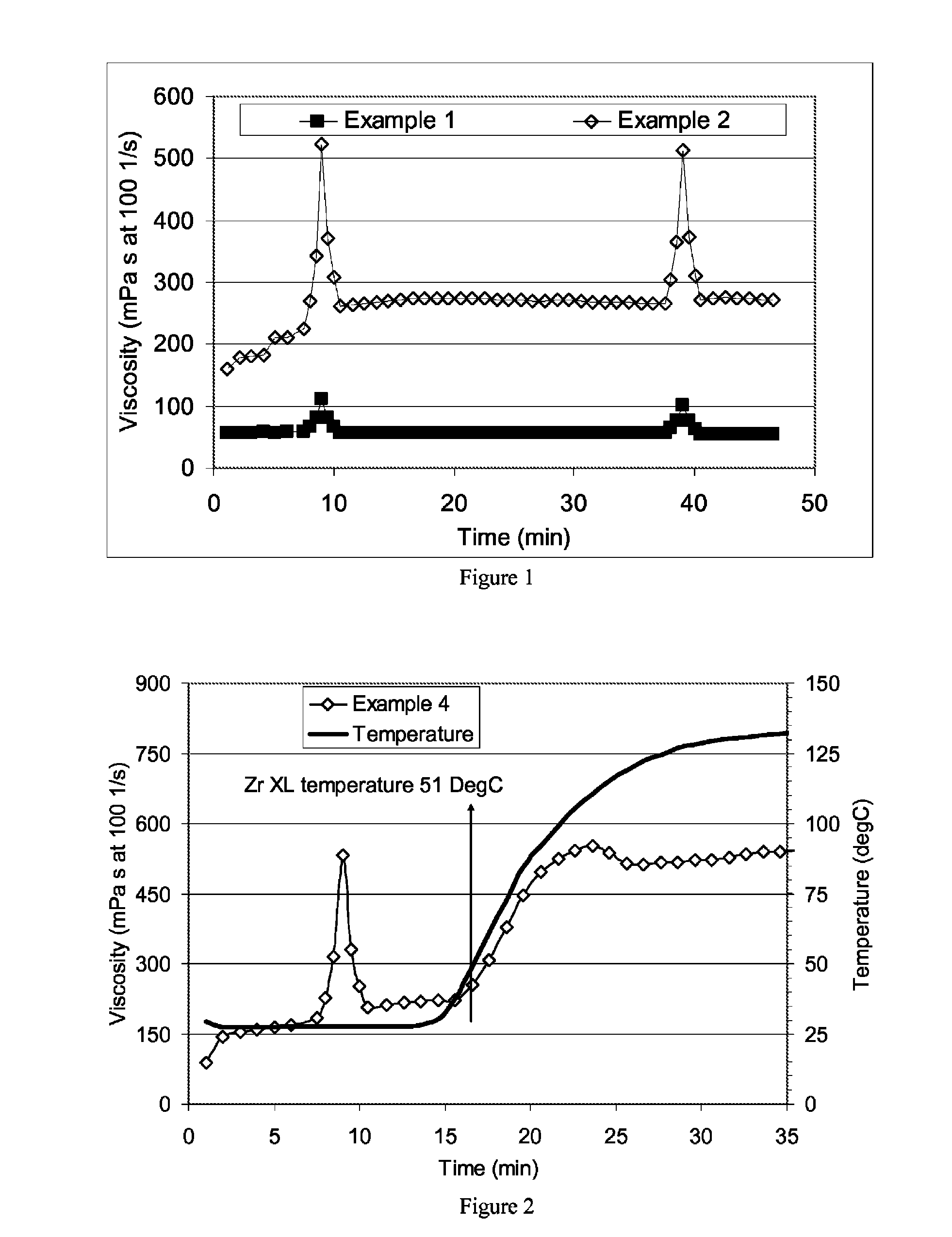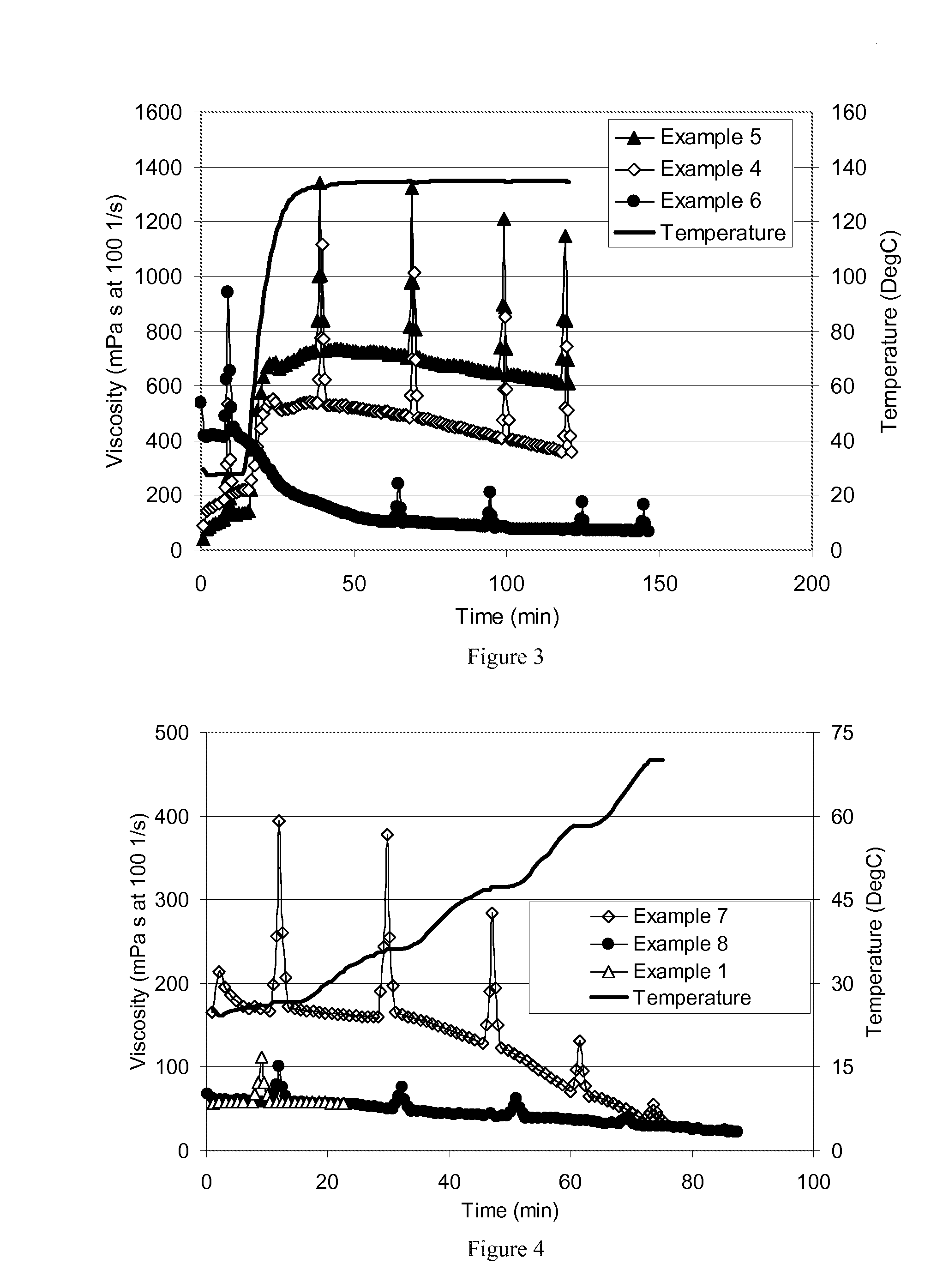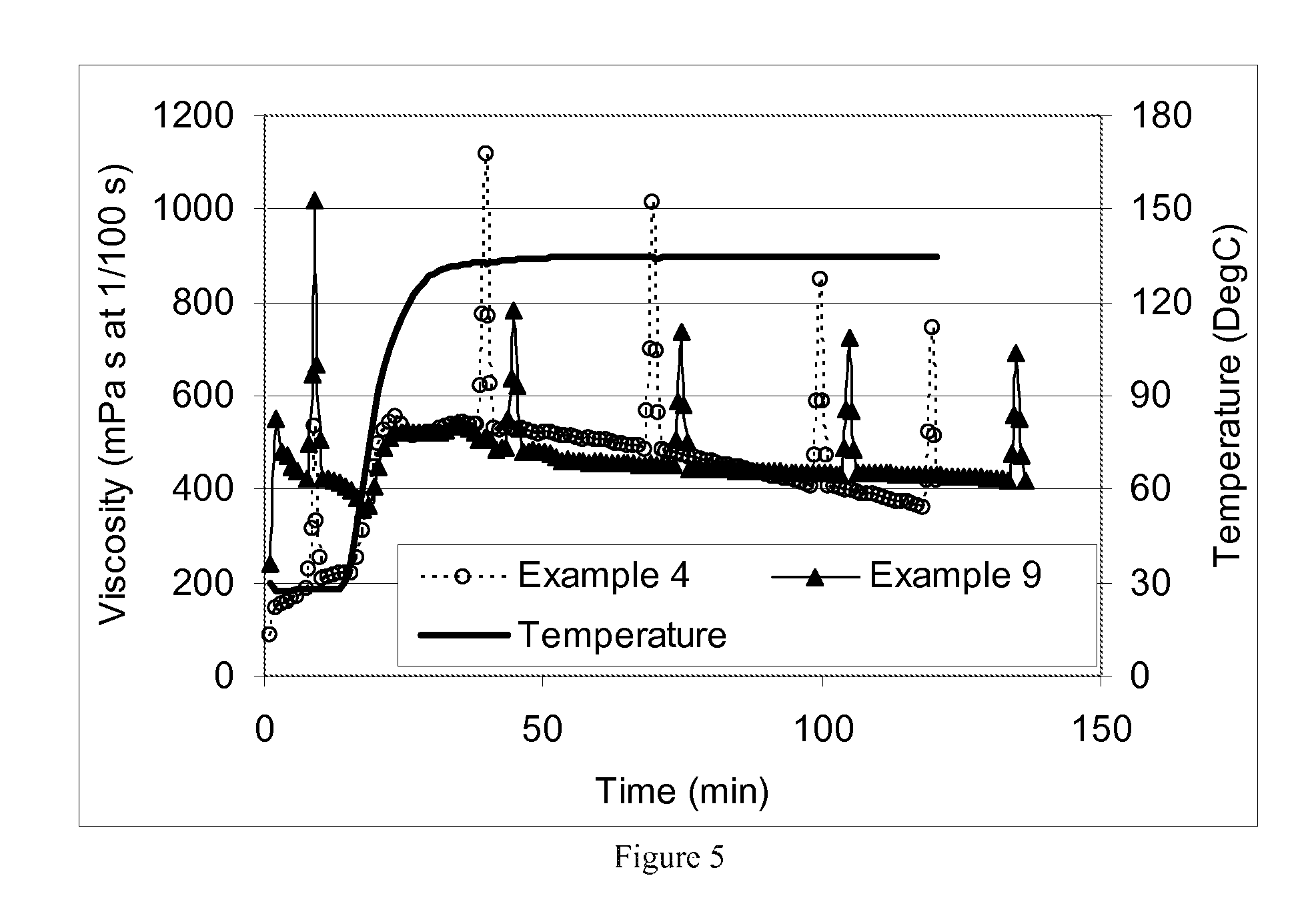Well treatment with ionic polymer gels
a technology of ionic polymer gel and well treatment, which is applied in the direction of well accessories, sealing/packing, chemistry apparatus and processes, etc., can solve the problems of high-shear viscosity loss in metal-crosslinked polymer fluid, unrecoverable, and unsatisfactory fluid viscosity loss,
- Summary
- Abstract
- Description
- Claims
- Application Information
AI Technical Summary
Benefits of technology
Problems solved by technology
Method used
Image
Examples
example 1
[0087]baselines for comparative purposes to show the charge screening effect of KCl and surfactants on a commercial carboxymethylhydroxypropyl guar (CMHPG) crosslinked with boron. For Example 1 (no KCl), a polymer solution was made by adding 1.8 g of a commercially-available CMHPG polymer powder used in the oilfield to 500 ml deionized water (30 pounds per thousand gallons (ppt)). This solution was stirred in a WARING blender for 30 minutes after reducing the pH to about 6.5 with fumaric acid. To this hydrated polymer solution, 0.75 ml of tetraethylenepentamine (TEPA) was added, raising the pH to 10.4, a value where boron crosslinking is quite active. To this solution, 2.5 ml of a 5% borax (sodium tetraborate decahydrate) solution (with 30 ppm of Boron) was added. The solution was then tested on a GRACE M5500 rheometer, and the viscosity was measured at 57 mPa s using an R1 rotor and B5 bob at 100 sec−1 and 24° C. (75° F.). During the test on the rheometer at 7 and again at 37 minut...
example 4
DMCB Surfactant
[0091]Example 3 was repeated except that 0.05 vol % DMCB surfactant (ARQUAD DMCB-80 benzyldimethylcocoalkyl ammonium chloride surfactant) was used in place of the DMB surfactant. At 24° C., the viscosity of the boron-surfactant crosslinked mixture was 160 mPa s; at 135° C. the zirconium crosslinking had increased the viscosity to 530 mPa s. The temperature at which the viscosity began to increase was taken as the Zr-complex crosslinking temperature (XLT), approximately 50° C., as seen in the rheology profile of FIG. 2.
examples 5 and 6
Varying Amounts of DMCB
[0092]Example 4 was repeated at 0.025 vol % (Example 5) and 0.10 vol % DMCB (Example 6). The rheology profiles are illustrated in FIG. 3 along with Example 4 (0.05 vol % DMCB), and show that the DMCB can be used to control both the room temperature viscosity as crosslinked by Boron and the ultimate viscosity upon crosslinking with the Zirconium crosslinker used.
[0093]Examples 7 and 8 were prepared to evaluate the use of the DMB surfactant as a sole crosslinker, which proved ineffective by itself. In Example 7, the mixture included 30 ppm boron and 0.085 vol % DMB surfactant, a similar composition to that of Example 3, except without any Zr crosslinker. In Example 8, 0.085 vol % DMB surfactant was used, but the boron and Zr were omitted; and these two examples were compared to Example 1, where the mixture included the 30 ppm boron, but did not include surfactant or Zr crosslinker. The resulting rheology profiles for Examples 1, 7 and 8 illustrated in FIG. 4 sho...
PUM
| Property | Measurement | Unit |
|---|---|---|
| conductivity | aaaaa | aaaaa |
| temperature | aaaaa | aaaaa |
| conductivity | aaaaa | aaaaa |
Abstract
Description
Claims
Application Information
 Login to View More
Login to View More - R&D
- Intellectual Property
- Life Sciences
- Materials
- Tech Scout
- Unparalleled Data Quality
- Higher Quality Content
- 60% Fewer Hallucinations
Browse by: Latest US Patents, China's latest patents, Technical Efficacy Thesaurus, Application Domain, Technology Topic, Popular Technical Reports.
© 2025 PatSnap. All rights reserved.Legal|Privacy policy|Modern Slavery Act Transparency Statement|Sitemap|About US| Contact US: help@patsnap.com



